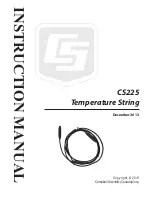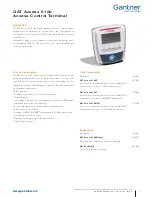
25
A telescope exhibits cone error if the telescope tube’s opti-
cal axis is not perpendicular to the equatorial mount’s Dec.
axis. Such cone error can reduce the pointing accuracy of the
mount and the accuracy of the polar alignment. A 3-star GoTo
alignment automatically compensates for some of the “cone”
error, but pointing accuracy will be optimized by mechanically
minimizing the cone error. The following calibration procedure
should be performed before the initial use of the telescope and
periodically thereafter to ensure peak accuracy.
Testing for Cone Error
This test is performed at night using two bright stars located on
opposite sides of the meridian.
1. Confirm that the telescope is properly polar-aligned.
2. Perform a 2-star GoTo alignment. The alignment stars
should be located on the same side of the meridian
and their declination deviation should be within 10 to 30
degrees.
3. Use the SynScan hand controller to locate a few objects
on the same side of the meridian as the alignment stars.
The pointing accuracy should be quite good.
4. Then use the SynScan hand controller to locate a few
objects on the other side of the meridian.
• If the pointing accuracy is still good, then the mount
system has small or no cone error.
• If the pointing accuracy becomes poor on the opposite
side of the meridian from the alignment stars, and
most of the error is on the R.A. axis (that is, the object
can be brought back to the center of the eyepiece
using the left or right direction keys), it means that
the cone error of the telescope-mount system is quite
large.
Eliminating Cone Error
1. Insert an illuminated reticle eyepiece into the focuser (or
diagonal) of the telescope. Confirm that the telescope is
properly set up and balanced, and that the finder scope is
aligned with the optical tube of the telescope.
Note:
Steps 2
to
4
are to identify R.A. and Dec. move-
ments of stars in the reticle eyepiece. If you are already
familiar with the movements, proceed to
Step 5
.
2. Find a bright star and position the telescope so the star is
centered in the eyepiece field of view.
Figure 6. a)
The counterweight shaft is horizontal and the telescope is pointed north.
b)
Rotate the mount 180 degrees about the RA axis.
a.
b.
Figure 7.
Gently push the telescope horizontally to determine the
direction of optical axis offset.
Appendix C: Eliminating Cone Error







































